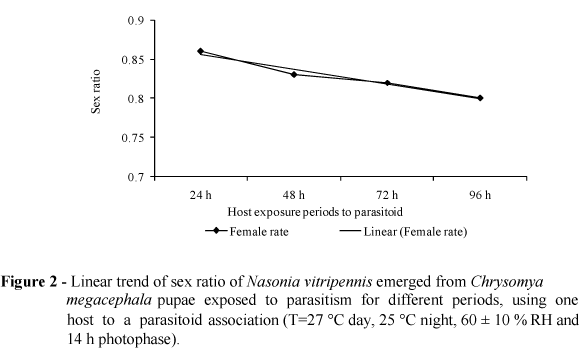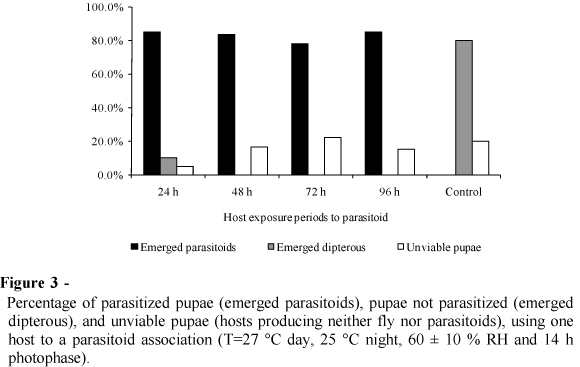To test the assumption that exposure of the host to parasitoid for long periods could provoke superparasitism, the aim of this work was to test the consequences on the immature development time, productivity of parasitoids per pupa, sex ratio and rate of parasitism of Nasonia vitripennis bred in Chrysomya megacephala pupae. Each individual pupa was placed in a glass tube with one parasitoid female for 24, 48, 72 and 96 h period of exposure, under controlled laboratory conditions. Twenty replicates of each period were performed. ANOVA with a 5% significance level was applied. The 72 h exposure caused the immature development time to increase. The mean parasitoids emergence per pupa did not vary significantly with the time of exposure. There were a significantly higher number of females than males and a trend in sex ratio deviation towards the females in all of the treatments. An increase in the number of unviable pupae rates were observed with increased exposure time.
Biological control; calliphorids; immature development; sex ratio; superparasitism





